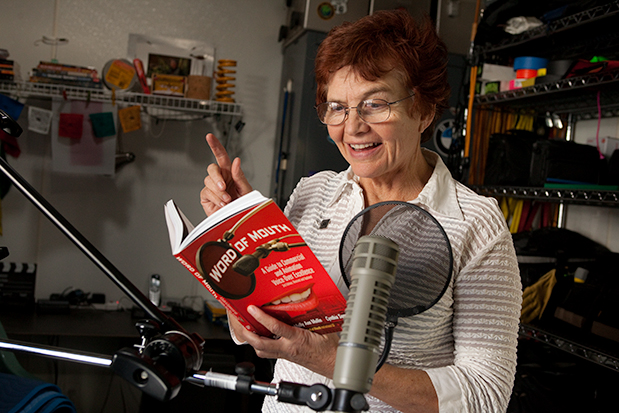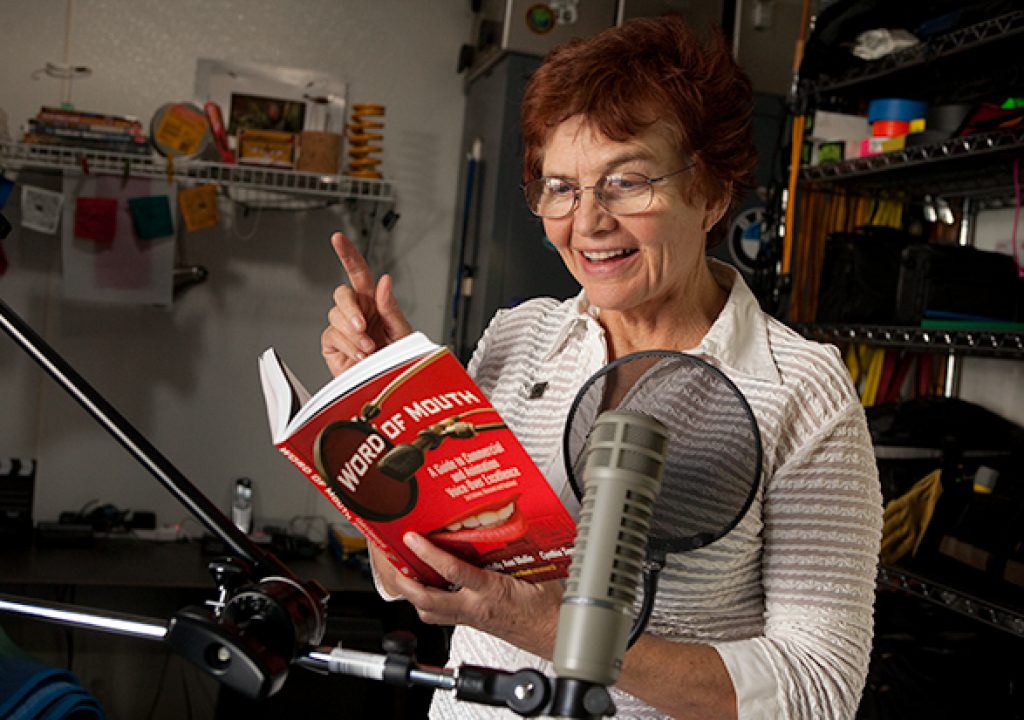
For us, voice-over has made the difference between success and failure of quick, lucrative web videos for business.Think you can’t do a voice-over track yourself? Here’s a concept that will make it easy for you to record simple, impactful narration that is economical and effective. You just have to visualize what you’re going to say. Let me explain…
Video segments for web are on the tip of everyone’s tongue. Undoubtedly, brief PR videos, along with short demos, explanation of services, book trailers, introduction of personnel and technical information are the way small businesses can stand out and get noticed. Potential clients will predictably watch a video on the web, but may not even read the same material presented in paragraphs of text.
I got into voice-overs without any experience or study at all. I had to! Without voice-over, a large percentage of our business productions would have been utter failures. Clients want to talk to the boss of a small business, thus that individual must be shown on camera. Relationships that end in sales depend on his or her presence, knowledge and credibility.
But even when talking about their own products or services, most of our clients have proved to be very poor presenters. I mean really bad! Though claiming to be a Toastmasters awardee, one marketing VP took more than 4 hours on set to get through a 2-minute product demo! I had coached him on practicing his presentation on camera. I did a site visit and walked him through how the set would look. Yet when the red light went on on the camera, his delivery fell way short, virtually unusable. This example of presenter paralysis is not as extreme or unusual as it sounds.
To a person, everyone who has frozen up in front of Karl’s camera has later admitted that they did not follow my direction to practice what they wanted to say. So what to do? Even if we’ve been blind-sided by your amateur talent, and your budget is blown, we still have to produce. Limit what parts the client has to say, go to B roll or stills and add voice-over was my first thought. The second one was, why not do voice-over myself? How hard can it be?
So I began to visualize how I could demonstrate the importance of product or the value of a service, even ones with which I was totally unfamiliar. Yes, visualize. Because I’m a photojournalist, I’m always looking for images that define the who, what, when, where, how and why of a story. I’ve got to dig to find the essential pictures that explain what’s going on and why people should pay attention.
Here’s my visualization process to create successful voice-over.
- Who am I, the speaker? Announcer, participant, testimonial, age, social strata, emotion and many other features.
- Who is the intended audience? Same questions apply.
- What event or condition has happened that leads up to the words in the script? Is there a problem, conflict, equipment need, service situation, historical fact?
- What is the desired outcome of the script or the call to action? A product purchase, medical problem solved, event visit, charitable contribution?
- When does the scene take place? Time, historical period, day or night, rain or shine?
- Where does the action take place? Physical location, background against which action is played out?
- How refers to what everyone wants to know; the step-by-step instructions, put as simply as possible, to achieve a result or solve a problem
- Why refers to the motivation of the speaker, such as giving historical background, technical explanation, testimonial, tutorial, emotional appeal.
I research facts and generate mind pictures, imagining all these elements as vividly as possible, in order to make meaning out of a bare script and be able to deliver the words with impact. I love the challenge of putting my voice anonymously into someone else’s project, and to sound as though I were intimately and enthusiastically involved. I’ve now done so many voice-overs, and saved so many productions for grateful clients, that I decided it was time to invest in some serious training and voice lessons.
Research had revealed Susan Blu’s name several times on the internet, and I bought her book for voice actors called Word of Mouth (ISBN13-9781879505872). Lo and behold, Chapter 2, which is called “The Basic Process”, describes in lucid detail exactly the visualization steps I had informally devised to help myself create the perfect voice. Totally cool to find out you’re on the right track without knowing it! I read the rest of this book cover to cover; it’s a great guide, definitely to be recommended. And I’m going to buy an expensive condenser mic and get a voice coach to hone my nascent skills.

